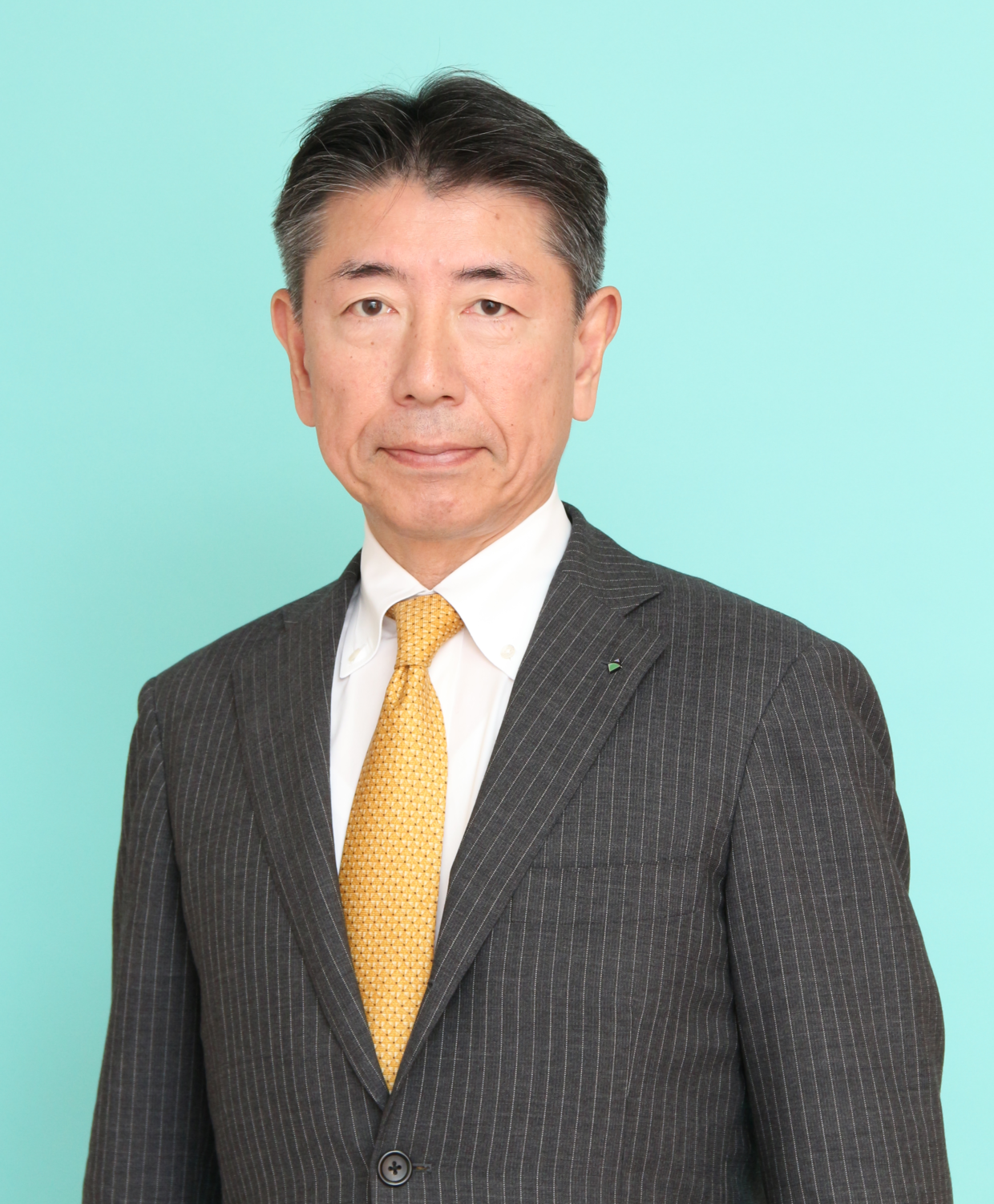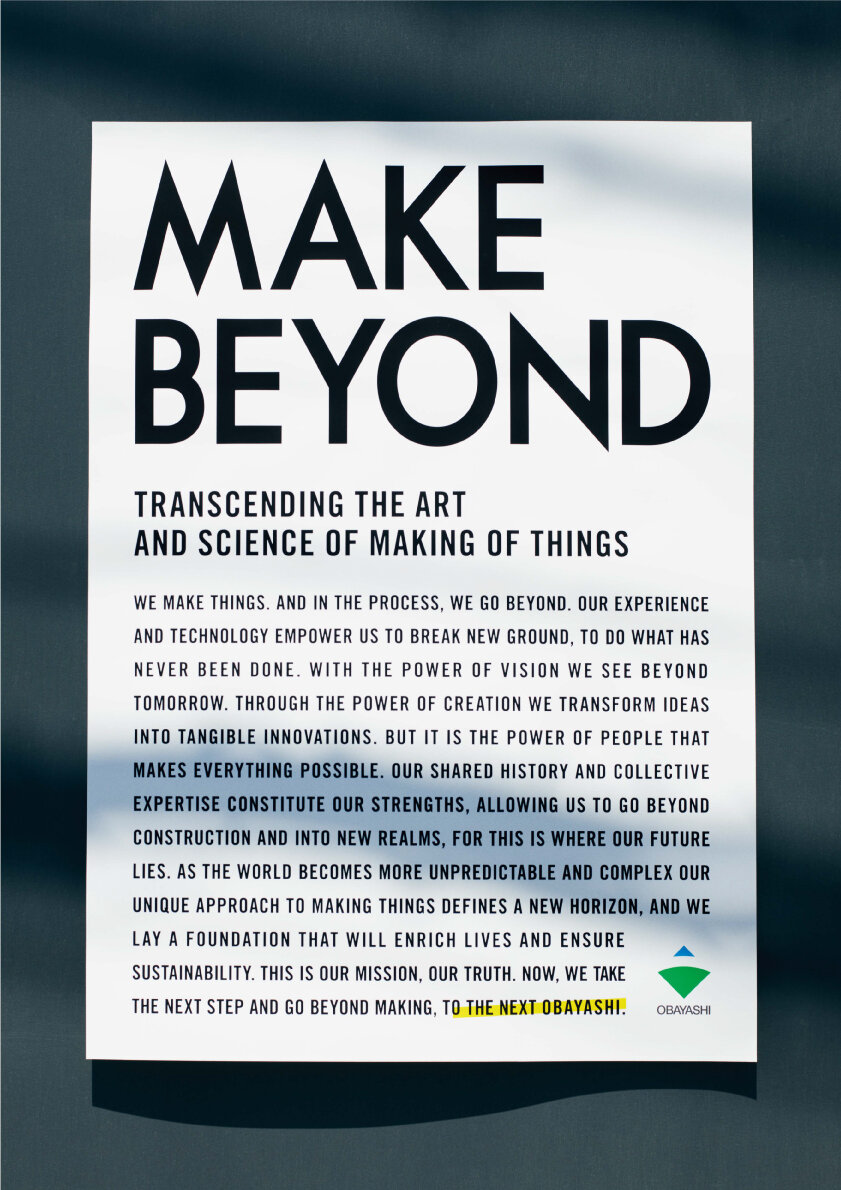Establishing the Obayashi Basic Principles
In January 2011, Obayashi Corporation celebrated its 120th anniversary. This year also saw the company formulate and announce the Obayashi Basic Principles. These Principles are intended to steer the company to becoming a leader in sustainability. At the same time, they were intended to ensure that the advanced technologies and reputation for integrity that have distinguished Obayashi since its establishment are carried forward into the generations to follow.
The Obayashi Basic Principles are imbued with the spirit of the Obayashi Three Pledges—Quality, Value, and Efficiency, values that have been passed down since the company’s founding in 1892. Above these values is the Obayashi Philosophy which defines for Obayashi people, who we want to be, along with the Obayashi Code of Conduct, a restructuring of the company’s unique approach to social responsibility: our unique approach, and action commitments: how we do things.
Immediately after the Great East Japan Earthquake struck Japan in 2011, causing widespread devastation along Japan’s Pacific coast, Obayashi launched a full-scale emergency response befitting its position as a leader of Japan’s construction industry. Obayashi brought to bear all of its strengths in its response to this crisis. The company leveraged its ability to procure personnel, supplies, and means of transportation; in short, everything required to help the devastated region achieve a rapid recovery of production facilities and public infrastructure. This multifaceted and complex work was done while simultaneously processing, decontaminating, and disposing of the massive amounts of debris generated by the earthquake and tsunami. Obayashi was there: ready, willing, and uniquely able to help the Tohoku region rebuild.
The 2011 Tohoku earthquake and tsunami was hardly the last natural disaster to hit Japan. In 2016, two major earthquakes struck Kumamoto in Kyushu, Japan’s southern island, causing widespread damage and loss of life. The country also has seen widespread heavy rains, flooding, and other extreme weather events in recent years. Obayashi Corporation will continue its vital role in disaster prevention and mitigation, and it will steadfastly continue the work of rebuilding in the wake of natural disasters whenever and wherever they occur in Japan.
(Reference: Special Contents > Six Stories > Great East Japan Earthquake)
(Reference: Special Contents > Six Stories > Kumamoto Earthquake)
Diversification of Earnings Base
Obayashi Corporation launched its three-year “Medium-Term Business Plan ’12” to reshape the company’s earnings structure into one that can flexibly and robustly respond to the rapid changes in the business environment, such as those caused by the 2008 financial crisis and the Tohoku earthquake and tsunami. The company is diversifying its revenue structure while continuing to grow its core businesses to improve the earning power of the Obayashi Group. With that in mind, the company has articulated further strategic global expansion as one of its key policies. This policy focuses on three regions: Southeast Asia, North America, and the Middle East, along with Oceania. Obayashi has strategically expanded its business based on a deep understanding of the unique characteristics of each region. This kind of regional understanding is developed by drawing on the specific expertise of local companies through strategic acquisitions and joint ventures.
In October 2014, the Technology Business Development Division was set up to accelerate business development in new areas, with particular focus on renewable energy. Since the inception of its renewable energy business in FY2013.3, Obayashi has built facilities with the capacity to power approximately 70,000 households in Japan for one year (154 MW) as of March 2021.
April 2015 saw the start of a new three-year plan, the Medium-Term Business Plan 2015 (Evolution 2015). Having achieved nearly all the goals set in the previous Medium-Term Business Plan, Obayashi continued to promote the diversification of earnings base by adding “New Businesses” as a fourth pillar of its business, in addition to Building Construction, Civil Engineering, and Real Estate Development.
Moving Forward with ESG Management and Enhancing Group Management
Bolstered by a recovery in the Japanese domestic construction market and improved productivity at construction sites, the performance of the Obayashi Group was on a solidly upward trend during the period covered by the Medium-Term Business Plan 2015. Nearly all of the goals outlined in the plan were achieved before the plan’s final fiscal year. Faced with the need for technological innovation that can move faster than ever, the company launched the Medium-Term Business Plan 2017 one year ahead of schedule. The goal was to maintain and build upon the strong performance that the Group was enjoying, paving the way for future growth through the combined efforts of the entire Group. With a view to achieving sustainable growth through the implementation of the 2017 plan, the Obayashi Group set a firm course toward greater globalization. The plan calls for stronger strategies, not only on a standalone basis, but on a group-wide basis as well with the goal of enhancing international competitiveness and Group management capabilities. Moreover, the plan sets forth policies for ESG (environmental, social, and governance) initiatives which serve as a foundation of the company’s management strategy. In 2019, sustainable development goals (SDGs), which address a wide range of societal challenges, were incorporated into the company’s vision for the environment, Obayashi Green Vision 2050. Initially drafted in 2011, the Green Vision was subsequently revised as the Obayashi Sustainability Vision 2050. By conducting its business activities within a framework of the sustainable development goals, Obayashi Corporation is striving to achieve the objectives that are central in the Obayashi Philosophy, that is, to achieve a sustainable society, along with the Obayashi Group’s goal of continually enhancing its corporate value.
Renewal of Management Structures and Overhaul of the Compliance System
In 2006 and 2007, it emerged that the company committed several violations of laws and regulations under the Antimonopoly Act, by interfering with competitive bidding on public works projects. Reflecting on this experience, Obayashi drafted and publicized a Corporate Ethics and Antimonopoly Act Compliance Program, the purpose of which was to ensure that it is not involved in bid-rigging ever again. Nevertheless, despite strong efforts to ensure compliance with this program, there was yet another incident of collusive bidding in 2017 in connection with the Chuo Shinkansen Maglev Line. In response, Obayashi overhauled its management structure in March 2018, which included the resignation of the president. Director and Senior Managing Executive Officer Kenji Hasuwa was appointed Obayashi’s new president. Under the reorganized management structure, the company revamped its compliance system, working hard to rebuild its reputation.

A New Brand Vision for Obayashi’s 130th Anniversary
Founded on January 25, 1982, in Osaka as the Obayashi Store, the company provided civil engineering and building construction services to Japan, a country that was just entering the modern era. In the 130 years since that time, Obayashi has worked in the spirit of honest craftsmanship, a spirit that has been cultivated by sincerely addressing the needs of its customers and society.
In January 2021, as Obayashi Corporation marked its 130th anniversary, the company announced its brand vision MAKE BEYOND: Transcending the Art and Science of Making of Things. This vision is intended to generate excitement and hope for the future and to earn the trust and support of the Group’s customers and of society. This vision reaffirms the purpose of the Obayashi Group, a company that has consistently responded to the needs of society and contributed to social development since its founding. The vision also makes clear the Group’s intention to build new horizons through craftsmanship, the art and science of making things.

Goals for the Obayashi Group
Obayashi Corporation has been steadily building its sales and earnings, including a record high profit in fiscal year 2018. However, operating profits took a severe hit in 2020 with the emergence of the Covid-19 pandemic at the end of FY2020.3
Obayashi’s efforts to improve productivity, horizontally deploy technology, and expand its business domains are a work-in-progress. At the same time, we at Obayashi feel an urgent need to respond quickly to the changes in the world brought about by the pandemic as well as the process of digital transformation (DX). For the Obayashi Group, the next 10 years will be a period during which we will be called upon to fulfill our social mission. The only way we will be able to achieve sustainable growth will be for each company in the Group to fulfill its mission as "One Team" as we face the challenges that lie ahead.
Looking to the future, we must advance step by step to solve the problems in front of us as look toward achieving our brand vision of “Make Beyond.”
The Obayashi Group will move to the next level of the art and science of making things, building the future to which we all aspire.